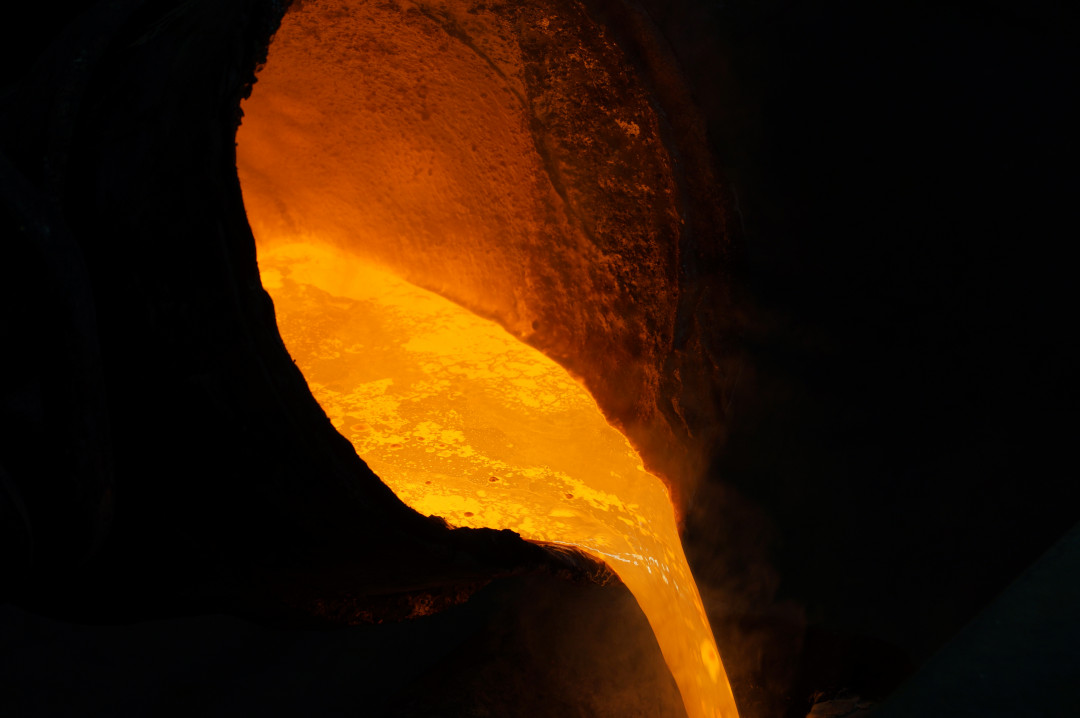
Lead-containing alloys play an important role in the casting industry due to their good product properties. However, harmful emissions are a problem in production. The TH Köln and Martin Luck Metallgießerei GmbH (MLS) are therefore developing an AI-based centrifugal casting process that reduces the lead content in the component and improves energy efficiency.
‘Cast components such as pipes, discs or slide bearings are important components in mechanical and vehicle engineering or in the offshore industry. Copper-tin-lead alloys are often used to produce workpieces with high density, good electrical conductivity and favourable friction and sliding behaviour,’ explains Jens Reuß from MLS. These advantages are offset by a disadvantage in the production process: since the machines are often controlled manually, employees are exposed to harmful dust and gas. In addition, the process is very energy-intensive.
In centrifugal casting, liquid metal at a temperature of around 1,000 degrees is poured into a cylinder called a mould, which rotates on its own axis. The centrifugal forces cause the molten metal to collect on the wall of the mould and solidify there, creating a rotationally symmetrical workpiece. A key objective of the project is to develop a new type of production process.
A prototype for a new casting machine is being developed by the MLS and should enable the rapid production of up to 15 castings per day with a height of around 25 centimetres and a diameter of 25 centimetres in accordance with the DIN standard. Since heating the mould consumes a lot of energy, the focus is on an energy-saving heating system that evenly heats the mould using an air-gas mixture. In addition, the cooling system is to be adapted and automation components integrated.
In the Materials Laboratory at the TH Köln, an alloy modelling process is being used to investigate how a new alloy could be composed whose relevant properties do not deteriorate, even though the lead content is only 6.5 to 8.5 per cent instead of the previous 13 to 17 per cent. ‘The properties of the finished castings not only depend on the lead content, but also crucially on the casting process. That is why we are also investigating how various process parameters affect the product properties,’ says Prof. Dr. Danka Katrakova-Krüger from TH Köln. These include, for example, the temperature of the melt, the dimensions of the workpiece, the temperature and quantity of cooling water, and the duration of the cooling process.
At the Institute for Materials Application, scientists are using a simulation to approach the perfect microstructure. To do this, an existing model for the solidification of cast components is optimised and adapted to the framework conditions in the project. In addition, the researchers are working with MLS customers to develop quality criteria for the cast parts. ‘The computer then calculates how much the lead content can be reduced so that the products are equal to those made from a conventional alloy,’ says Prof. Dr. Stefan Benke from TH Köln.
Artificial intelligence controls the process
The results from these sub-projects are incorporated into an AI model of the Institute for Automation & Industrial IT. This uses the process, laboratory and simulation data to determine the optimal process parameters for sufficient workpiece quality. ‘The fully trained artificial intelligence will be able to determine the optimal settings for the system, depending on the shape of the casting, such as the rotation speed or the preheating temperature of the mould. It also determines the point at which the casting process is completed and when cooling begins,’ says Prof. Dr Christian Wolf from TH Köln.
The newly implemented automation components should enable the prototype to implement the parameters determined by the AI without human intervention. ’Since systems have been controlled manually up to now, employees spend a lot of time waiting next to the machine. During this time, they are exposed to harmful emissions, which can be avoided in the future. This is how we achieve a central project goal,’ says Reuß. The expected energy and material savings are to be realised through the new heating system and optimised production processes. The AI-based process settings should also ensure that there are fewer faulty castings that have to be remelted at high energy costs.
The project ‘Simulation and AI-based process development to reduce the lead content and lead emissions in the centrifugal casting of copper-tin-lead alloys while maintaining the material properties’ will be carried out by three institutes of the TH Köln and Martin Luck Metallgießerei GmbH (MLS) from October 2023 to September 2026. The project involves Prof. Dr. Danka Katrakova-Krüger from the Laboratory for Materials, Prof. Dr. Christian Wolf from the Institute for Automation & Industrial IT/:metabolon Institute and Prof. Dr. Stefan Benke from the Institute for Materials Application. The Federal Ministry for Economic Affairs and Climate Protection is funding the project through the Central Innovation Programme for SMEs (ZIM).

